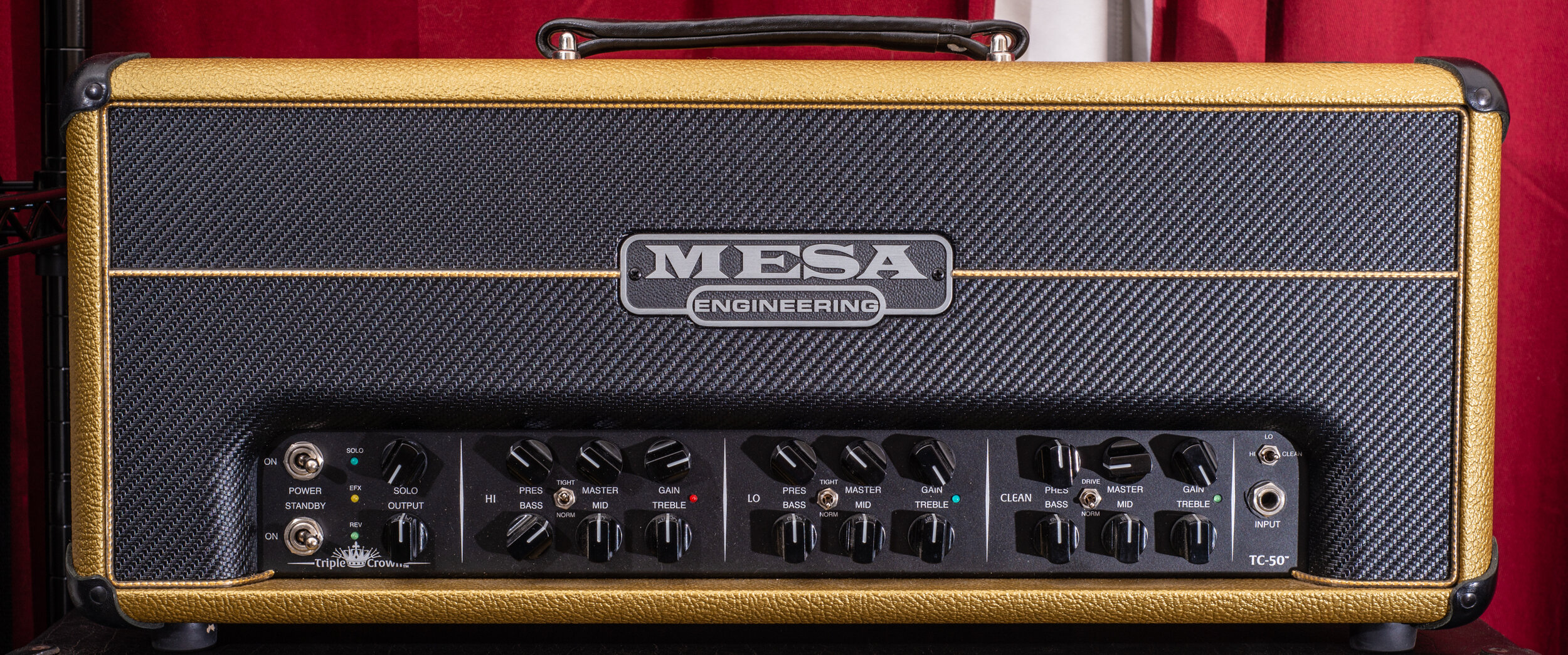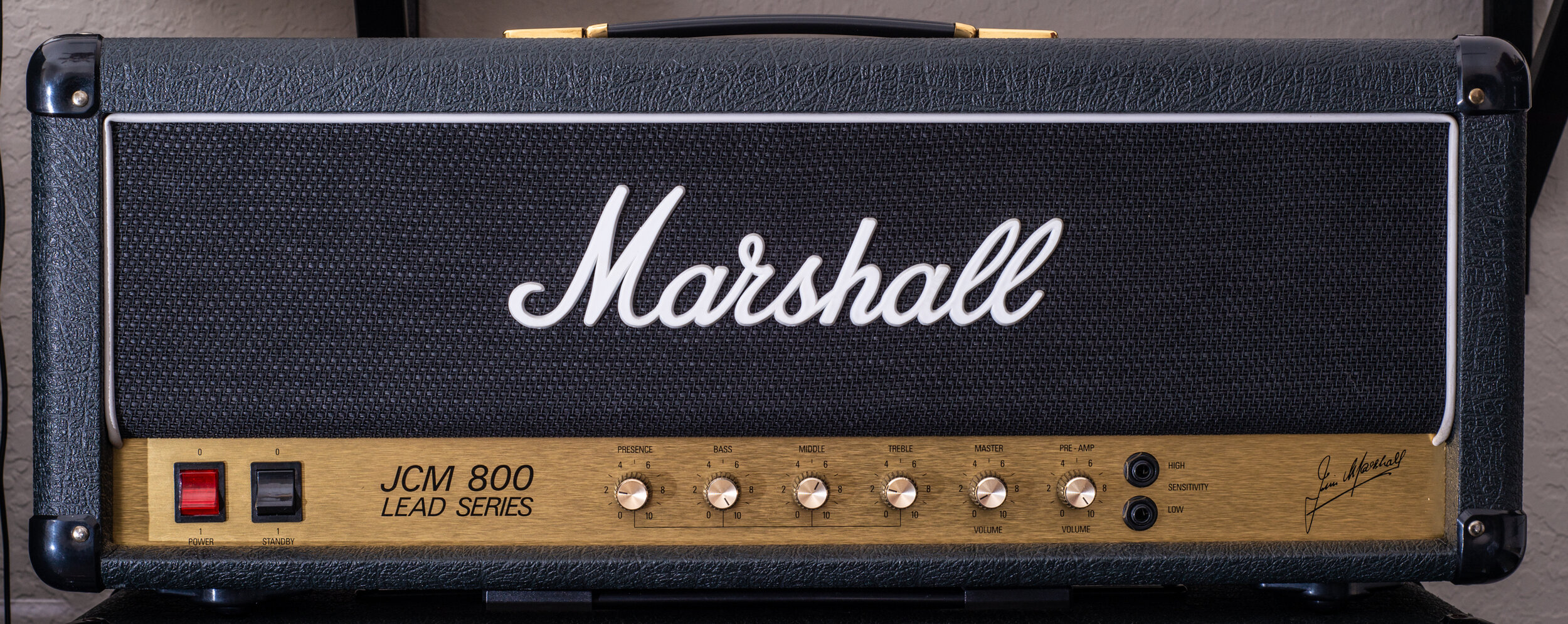I finally have a single channel, master volume, Super Lead Mark II amp. The full 100 watter too, and a reissue to boot.
This is a hell of an amp, and I can see why this has been the tone people lust after for years, build amps based around, modify to their liking, and so on. This amp is dynamic, punchy, full sounding, and has this incredible elasticity and flow to the notes that is impossible to really describe without experiencing.
There’s not much to cover since it’s such a simple design, based on the early plexi circuits but using cascaded gain stages (and the voicing shaped to accommodate that), the JCM800 2203 is a staple of modern rock tones and possible the most famous and most recorded amp of all time (for overdriven tones, at least). A simple front panel has six knobs - presence, treble, mids, bass, volume, and preamp gain. Two inputs, a high and a low (skips one of the three gain stages). These are invariably run with the preamp gain set to max, but if desired can be set lower for surprisingly great sounding clean tones. Compared to the split channel JCM800s I have, this one feels like the mids are a little more relaxed, the amp just a tiny bit more mild, but with an even wider spectrum of sound. Contrasting with the JVM410 I got around the same time, this amp is the total opposite - it’s extremely touch sensitive and has very present ultra-highs, but without being piercing, and deep full lows that extend beyond any lows coming out of the JVM.
This particular unit is a 2005 reissue, complete with a factory effects loop, but still sporting the silver back grille (as opposed to modern Marshall’s black).
No other features on this one - just one great channel, a nice loop, and some of the best rock tones I’ve ever heard. Also no surprise that this is one of the best pedal platforms out there, it can be taken into extreme metal territory with a boost or distortion pedal and all of the characteristics of the pedal shine through as well, enhanced and colored by the amp perfectly. I have had a Joyo Ultimate Drive (OCD clone) for years now and thought it was awful until I heard it through this amp. My SD-1 and Tubescreamers sound great as well, and I can imagine any unique overdrives would have their full potential realized through an amp like this one.
Definitely a long term keeper - and it looks great stacked on top of my JCM800 2210 and JCM800 1960A cabinet!




